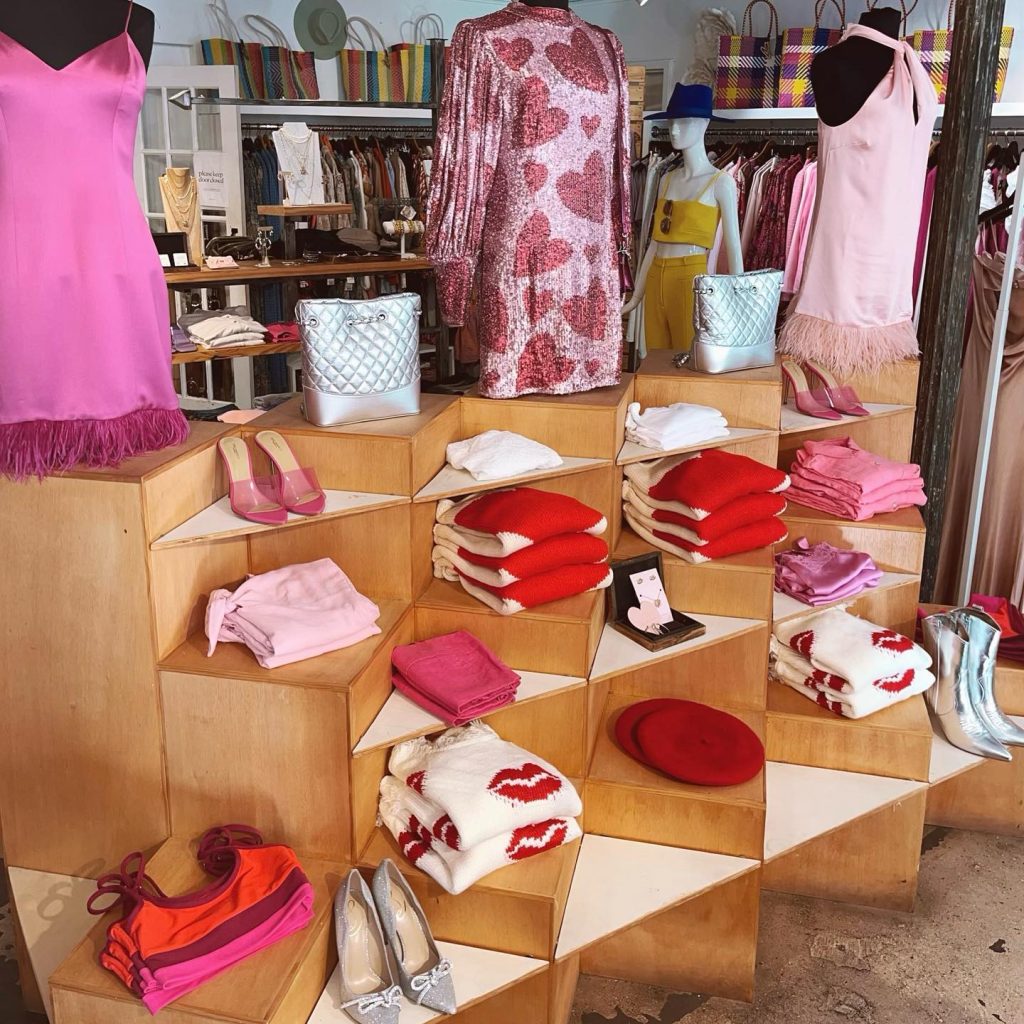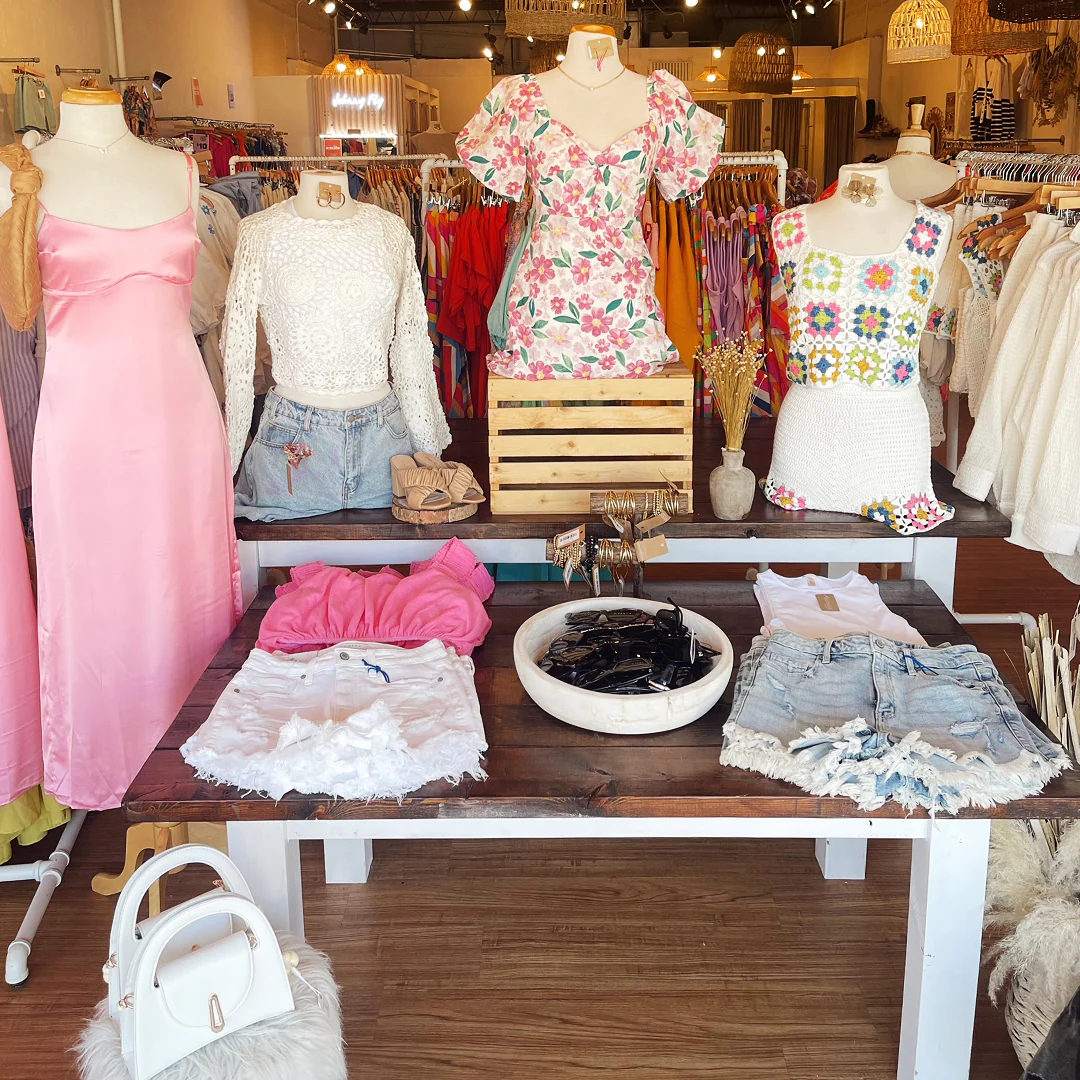A Beginner's Overview to Browsing the Boutique Fashion Scene
Checking Out the Development and Influence of Clothing on Modern Fashion Trends
The development of clothes has actually dramatically affected contemporary fashion trends, merging historic precedents with innovative technologies. Famous numbers like Coco Chanel and Yves Saint Laurent reinvented the apparel industry by introducing principles that prioritize comfort and accessibility, which remain to reverberate today. Meanwhile, technological strides in areas such as 3D printing and smart fabrics are redefining style possibilities and customer experiences. In addition, the growing emphasis on inclusivity and sustainability is improving sector criteria. As we take into consideration these complex influences, one should question just how these components collectively redefine style's function in reflecting and forming modern culture.
Historic Fashion Influencers
In the tapestry of style history, particular numbers have left an indelible mark, forming the patterns and designs that define entire periods. Coco Chanel, an advanced developer, redefined women's fashion by introducing comfy, classy apparel that left from restrictive corsets.
Elsa Schiaparelli is another crucial figure, renowned for her avant-garde designs that included surrealist art, working together with Salvador Dalí to produce whimsical pieces that tested conventional visual appeals. Her innovative usage of shade and vibrant patterns reverberates in contemporary fashion. Yves Saint Laurent, at the same time, democratized haute couture with prêt-à-porter collections, bringing path designs to the masses and establishing a precedent for contemporary ready-to-wear lines.
These dreamers, to name a few, not just reinvented fashion in their times however likewise set enduring fads that reverberate in today's garment industry, providing a structure whereupon modern-day developers remain to innovate and construct. Their traditions highlight the significance of creative thinking and daring in vogue's ever-evolving narrative.
Technical Improvements in Style
Among the vibrant landscape of the fashion business, technical improvements stand at the leading edge of advancement, reshaping how developers produce and consumers engage with fashion. The combination of 3D printing has actually reinvented style processes, enabling designers to experiment with complicated structures and sustainable materials that were previously inconceivable. This technology helps with fast prototyping, reducing waste and speeding up manufacturing times.

Smart fabrics, embedding innovation right into materials, are also transforming the sector. Innovations like temperature-regulating and self-cleaning fabrics supply improved performance and comfort. Wearable modern technology, incorporating functions like physical fitness tracking and communication, includes a new dimension to fashion, merging looks with functionality.
Social Changes and Design
As technical innovations continue to improve the garment industry, cultural changes are equally prominent, redefining style and consumer choices. In the last few years, the increase of social media platforms has increased the dissemination of international style fads, enabling varied social influences to merge and coexist. This digital interconnectivity has facilitated the fast exchange of concepts, resulting in a much more diverse and inclusive interpretation of design that shows the diverse nature of modern culture.
Social understanding and appreciation have prompted developers to attract ideas from a more comprehensive range of historic and ethnic contexts, integrating conventional motifs with contemporary aesthetics. This blend has actually caused style that reverberates with a bigger audience, advertising a sense of identification and belonging throughout different demographics. Furthermore, the raising need for customization has driven brand names to use personalized alternatives, allowing customers to share uniqueness while showing their cultural heritage.
Furthermore, shifting societal worths have actually affected style, with inclusivity and variety coming to be main motifs. The market has actually started to accept versions and influencers of various type of body, ethnic cultures, and sex identities, challenging traditional beauty standards. This makeover highlights the power of cultural shifts fit the future of style, as design comes to be a more genuine expression of cumulative and individual identification.
Sustainability and Modern Layout
While the style industry remains to evolve, the important for sustainability has become increasingly urgent, affecting contemporary style methods. This shift intends to deal with environmental worries and ethical factors to consider, resulting in a reevaluation of click site standard manufacturing methods. Designers are now incorporating sustainable products, such as organic cotton, recycled polyester, and biodegradable materials, into their collections, decreasing the environmental impact of fashion. The surge of slow style, which stresses high quality over quantity, urges customers to spend in classic pieces as opposed to short-term fads.
In addition, modern-day style is identified by its development in lessening waste and advertising circularity. This technique not only reduces ecological influence however additionally enhances the social obligation of style residences.

Future Trends in vogue

Sustainability will certainly continue to be a driving pressure in forming future style trends. The sector is significantly adopting eco-friendly materials and moral manufacturing methods, replying to an expanding consumer demand for liable practices. Developments such as published here bio-fabricated materials and closed-loop recycling systems are readied to redefine just how clothing is produced and consumed, minimizing ecological influence while maintaining design and top quality.
Cultural changes, consisting of the increase of inclusivity and diversity, will additionally play a pivotal role. As culture ends up being much more knowledgeable about social concerns, fashion is expected to come to be a platform for expression and adjustment. Designers will likely focus on developing collections that reflect a more comprehensive array of identities and experiences, championing representation and access.
Final Thought
The development of garments significantly influences modern fashion trends, where historic impacts combine with contemporary styles. This recurring development highlights fashion's duty as a mirror to social worths and technical improvement, recommending a future rich with development and inclusivity.
The development of garments has considerably influenced modern-day fashion fads, merging historical precedents with sophisticated technologies.Among the vibrant landscape of the fashion sector, technical improvements stand at the center of technology, improving exactly how developers develop and customers engage with style.While the fashion industry proceeds to advance, the necessary for sustainability has actually ended up being increasingly urgent, influencing contemporary design techniques. As sustainability ends up being ingrained in contemporary design, it paves the means for an extra mindful and responsible fashion market.
The evolution of apparel dramatically affects modern-day fashion trends, where historic impacts combine with contemporary designs.